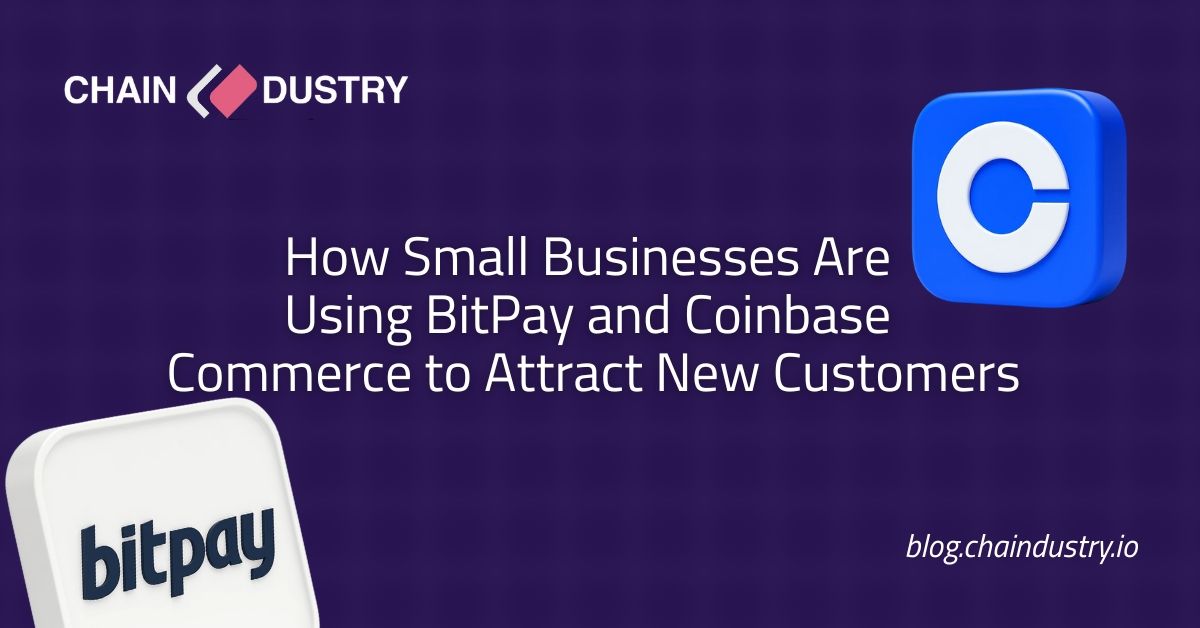Introduction
Not long ago, the idea of buying coffee or sneakers with Bitcoin sounded futuristic or at least impractical. Fast-forward to 2025, and crypto payments have quietly gone mainstream. From neighborhood cafés to global fashion brands, more businesses are opening their doors (and wallets) to digital currencies.
It’s not about hype anymore; it’s about convenience, lower fees, and customer loyalty. Let’s explore how real-world businesses are using crypto payments and why it might be closer to your daily life than you think.
How Crypto Payments Work in Retail
Crypto payments today don’t look like the wild west of 2017. Merchants now use payment processors like BitPay, Coinbase Commerce, and NowPayments, which automatically convert crypto into local currency.
Here’s how it works in practice:
-
You scan a QR code at checkout.
-
You pay using Bitcoin, Ethereum, or stablecoins.
-
The merchant receives fiat instantly minus small processing fees.
For the business owner, there’s no exposure to crypto volatility, and for you, it’s just another tap-to-pay experience, powered by blockchain.
The Growing List of Crypto-Friendly Businesses
Crypto acceptance is expanding fast across sectors:
1. Restaurants and cafés: Chains like Starbucks and Burger King have experimented with crypto payments in select locations, while smaller independent cafés in Europe, Latin America, and Africa are adopting BitPay for borderless transactions.
2. Retail stores: Electronics retailers like Newegg and luxury brands like Gucci and Tag Heuer now accept crypto directly through Coinbase Commerce or BitPay.
3. Online shopping: Shopify merchants can easily toggle on crypto payments, giving customers the option to pay in Bitcoin, ETH, or stablecoins.
The motivation is simple, crypto users are a high-spending, globally distributed audience. Accepting digital assets gives businesses an edge over competitors still waiting on traditional systems.
How Small Businesses Are Using BitPay and Coinbase Commerce to Attract New Customers

While global brands make the headlines, it’s local businesses that are proving crypto payments really work.
BitPay allows small merchants to accept crypto and instantly settle in fiat, so they never touch or hold digital assets. This is ideal for restaurant owners or retailers who want to attract a younger, tech-savvy audience without worrying about price swings. BitPay supports dozens of cryptocurrencies, including Bitcoin, Ethereum, USDC, and even meme coins like Dogecoin.
Coinbase Commerce, on the other hand, gives small businesses a direct link to one of the world’s most trusted crypto brands. It’s easy to set up, supports multiple wallets, and integrates with popular online store platforms like Shopify and WooCommerce. Businesses can choose to either keep payments in crypto (for long-term appreciation) or automatically convert them to USD or local currency.
Many small business owners report that accepting crypto payments doesn’t just increase sales, it also builds a new kind of customer loyalty. Shoppers who pay with digital assets are more likely to return, follow the brand online, and share their experience in crypto communities.
Crypto payments are also helping entrepreneurs in regions with unstable currencies or limited banking access offering a practical, borderless way to grow their businesses.
The Benefits for Customers and Merchants
For customers:
1. Faster checkout: No need for cards or bank intermediaries.
2. Privacy: Crypto transactions reveal less personal data.
3. Global spending freedom: Travel and shop anywhere with a wallet, not a bank account.
For merchants:
1. Lower fees: Typically 1% or less — far cheaper than traditional processors.
2. New markets: Reach international customers instantly.
3. Instant settlement: No waiting for bank clearances or chargebacks.
Together, these benefits are turning crypto into a serious payment alternative, not just a speculative tool.
Challenges that's Still in the Way
Of course, there are hurdles to overcome:
1. Price volatility: Merchants prefer stablecoins or auto-conversion to avoid losses.
2. Education: Many small business owners still don’t understand how to integrate or report crypto transactions.
3. Regulation: Varies by country, affecting adoption speed.
Still, with stablecoins, regulated platforms, and growing demand, crypto’s role in retail continues to expand quietly and steadily.
Conclusion
From local food vendors to international fashion houses, crypto payments are no longer a niche experiment. They’re becoming an everyday reality for people and businesses tired of slow, expensive, and restrictive payment systems.
Whether you’re buying lunch, booking a flight, or paying for clothes, crypto is reshaping how money moves, it's fast, global, and user-driven.
The next time you walk into a store, don’t be surprised if the cashier says, “Yes, we accept crypto.”
